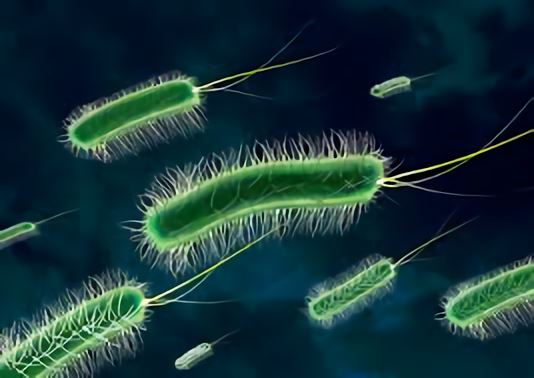Clostridium perfringens Vaccines
As more and more antibiotics are banned from use in animal feed, alternative strategies to prevent bacterial diseases are actively being pursued. Among them, vaccination against bacteria and toxins produced by them play an increasingly important role in the prevention and control of bacterial diseases.
Clostridium perfringens

Clostridium perfringens (C. perfringens), a Gram-positive, spore-forming anaerobic bacterium, causes gastrointestinal infections in many livestock and poultry. This bacterium is a mandatory anaerobic rod-shaped bacterium subdivided into five toxin types (A, B, C, D, and E) according to the production of four major toxins (α, β, ε, and ι). Clostridium perfringens type B and type C, which produce beta-toxin as the main virulence factor, cause enteritis and enterotoxemia in animals. Type B is the cause of small ruminants, leading to lamb dysentery, hemorrhagic enteritis, and enterotoxemia. Type C is pathogenic for humans, ruminants, and birds, and causes spasms, hemorrhagic enteritis, enterocolitis and intestinal toxemia.
Vaccines for Clostridium perfringens
Most pathogens initiate their infections at the mucosal surface such as the gastrointestinal system. Therefore, mucosal vaccination, as a primary prevention step for these infectious diseases, plays an important role in the prevention of diseases. The most effective way to prevent enterotoxemia is to vaccinate.
Live Bacterial Vector Vaccines
In current commercial vaccines, toxins are used in vaccine production along with some purification steps, requiring time-consuming detoxification and quality control steps. Thus, the production of non-toxic variants of β-toxin that remain fully immunogenic in a safe bacterial vector may be a beneficial alternative. This would be a good choice for preventing enterotoxemia or reducing its severity in the initial steps in small ruminants. The field of research of live bacterial vectors (LBVs) has made significant progress in the past few years, and various LBVs such as Lactobacillus casei, Salmonella enterica, and Bacillus subtilis have proven to be effective tools for using in livestock health. They have potential immunomodulatory properties and are widely used to express several heterologous antigens, thus may be promising hosts for the production of β toxoids. Recombinant Bacillus subtilis endospores can be used to vaccinate against C. perfringens α toxin and that could be used to protect against gas gangrene in humans and necrotic enteritis in poultry. The use of spores as competitive exclusion agents in animal feed supports their use as potential economic and thermostable vaccines for the poultry industry.Polysaccharides Vaccines
Antibody-mediated neutralizing toxins can alleviate clinical symptoms, but anti-toxins do not specifically target pathogens. A better approach is to remove pathogens from the host by targeting bacterial cell-specific antigens. In recent years, targeting cell surface carbohydrates as candidate vaccines has achieved some success. The immune sera against lipoteichoic acid-based glycoconjugate of C. difficile can be able to recognize a large number of C. difficile isolates and some other Clostridium species, but no immune recognition of C. perfringens, indicating that the structure of the lipoteichoic acid (LTA) antigen may not be conserved, and C. perfringens may elaborate a distinct structure on the cell surface. This unique C. perfringens-specific antigen can be used as a vaccine candidate for necrotic enteritis.
Our Services for Clostridium perfringens Vaccines
- Cultivation of bacteria
- Isolation of cell-wall polysaccharides
- Expression of toxoid on the cell surface
- Immunization and challenge
- Statistical analysis
With years of experience and an advanced vaccine platform, Creative Biolabs provides customers worldwide with a wide range of vaccines which are capable of inducing protective antibodies directed against C. perfringens various toxin when administered to animals or man and thereby providing prophylaxis or therapy against infection by C. perfringens toxin.
All of our products can only be used for research purposes. These vaccine ingredients CANNOT be used directly on humans or animals.


